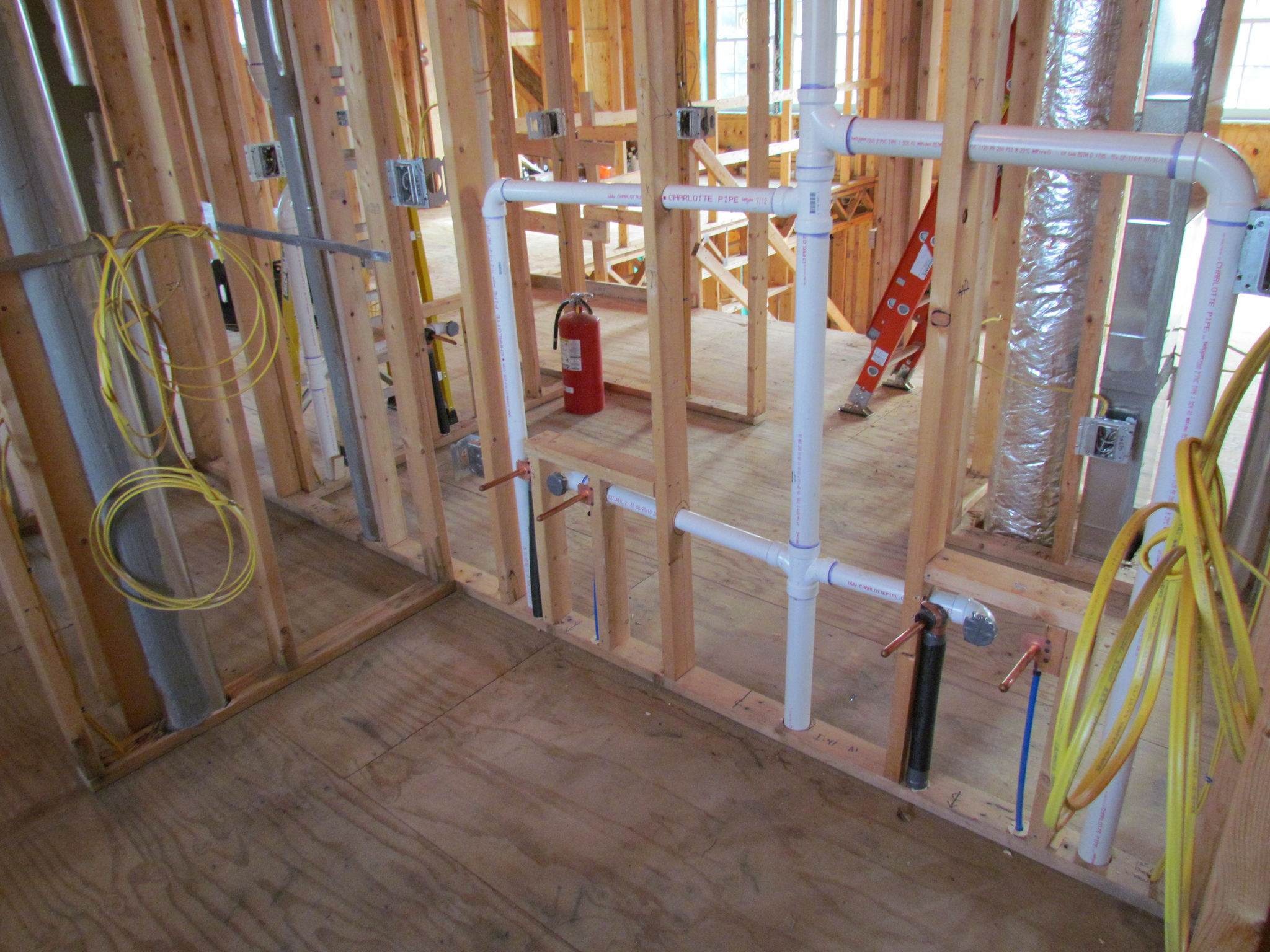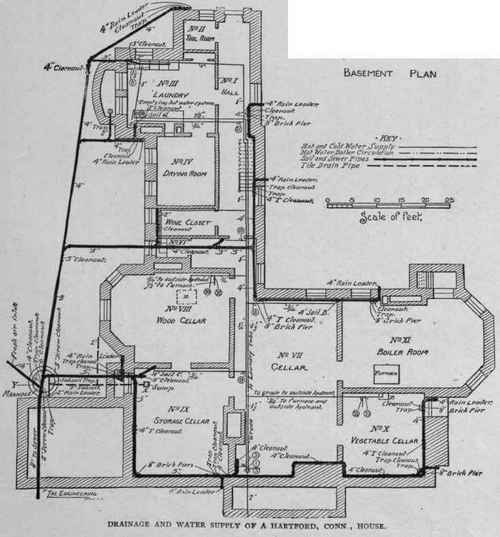This article in the next paragraphs on the subject of Anatomy of a House: Understanding the Components is pretty much intriguing. Give it a go and make your own personal ideas.

Understanding how your home's pipes system functions is essential for each home owner. From supplying clean water for drinking, cooking, and bathing to safely getting rid of wastewater, a properly maintained plumbing system is crucial for your family's health and wellness and comfort. In this detailed overview, we'll discover the intricate network that comprises your home's plumbing and offer ideas on upkeep, upgrades, and managing typical issues.
Introduction
Your home's pipes system is greater than simply a network of pipelines; it's an intricate system that guarantees you have accessibility to tidy water and reliable wastewater removal. Recognizing its components and just how they work together can assist you stop expensive repair services and make certain everything runs smoothly.
Basic Elements of a Plumbing System
Pipes and Tubing
At the heart of your plumbing system are the pipes and tubes that lug water throughout your home. These can be constructed from various products such as copper, PVC, or PEX, each with its benefits in regards to durability and cost-effectiveness.
Fixtures: Sinks, Toilets, Showers, etc.
Fixtures like sinks, commodes, showers, and bath tubs are where water is made use of in your home. Understanding how these fixtures connect to the pipes system aids in detecting issues and preparing upgrades.
Valves and Shut-off Points
Shutoffs regulate the flow of water in your plumbing system. Shut-off valves are essential throughout emergency situations or when you need to make repair work, enabling you to separate parts of the system without interfering with water flow to the entire house.
Water System
Key Water Line
The primary water line links your home to the community supply of water or an exclusive well. It's where water enters your home and is dispersed to numerous fixtures.
Water Meter and Pressure Regulator
The water meter measures your water use, while a stress regulator guarantees that water streams at a safe pressure throughout your home's pipes system, avoiding damage to pipes and fixtures.
Cold Water vs. Hot Water Lines
Understanding the distinction between cold water lines, which provide water directly from the major, and warm water lines, which bring heated water from the hot water heater, assists in repairing and planning for upgrades.
Drainage System
Drain Pipes Water Lines and Traps
Drain pipes bring wastewater away from sinks, showers, and commodes to the drain or septic system. Catches prevent drain gases from entering your home and also trap particles that could create clogs.
Ventilation Pipes
Air flow pipes permit air into the water drainage system, avoiding suction that can reduce drain and cause catches to vacant. Proper air flow is vital for maintaining the honesty of your pipes system.
Value of Proper Water Drainage
Guaranteeing appropriate drainage protects against back-ups and water damage. Consistently cleaning drains and keeping catches can stop costly repair services and prolong the life of your pipes system.
Water Heating System
Sorts Of Water Heaters
Water heaters can be tankless or standard tank-style. Tankless heaters warm water as needed, while tanks keep warmed water for immediate usage.
Upgrading Your Pipes System
Factors for Upgrading
Updating to water-efficient components or replacing old pipes can enhance water quality, decrease water costs, and enhance the worth of your home.
Modern Plumbing Technologies and Their Benefits
Check out modern technologies like smart leak detectors, water-saving toilets, and energy-efficient water heaters that can conserve cash and lower environmental influence.
Cost Factors To Consider and ROI
Determine the ahead of time costs versus long-lasting financial savings when considering pipes upgrades. Several upgrades pay for themselves with lowered utility costs and fewer repairs.
Exactly How Water Heaters Link to the Pipes System
Comprehending just how hot water heater attach to both the cold water supply and hot water distribution lines assists in detecting concerns like insufficient hot water or leaks.
Maintenance Tips for Water Heaters
On a regular basis purging your hot water heater to get rid of sediment, checking the temperature settings, and examining for leaks can prolong its life expectancy and enhance power performance.
Common Plumbing Issues
Leaks and Their Causes
Leaks can happen because of maturing pipes, loose fittings, or high water pressure. Resolving leakages without delay stops water damages and mold and mildew development.
Blockages and Blockages
Clogs in drains and toilets are frequently caused by flushing non-flushable items or a buildup of grease and hair. Making use of drainpipe displays and bearing in mind what decreases your drains can avoid blockages.
Signs of Plumbing Troubles to Expect
Low tide pressure, slow drains, foul odors, or unusually high water costs are indicators of possible pipes problems that should be resolved without delay.
Pipes Upkeep Tips
Regular Evaluations and Checks
Schedule yearly pipes evaluations to capture concerns early. Try to find indications of leakages, corrosion, or mineral buildup in faucets and showerheads.
Do It Yourself Upkeep Tasks
Basic tasks like cleaning faucet aerators, looking for bathroom leaks using color tablet computers, or protecting subjected pipes in cool environments can protect against significant pipes issues.
When to Call a Professional Plumbing Professional
Know when a plumbing issue calls for expert competence. Attempting intricate repair work without proper expertise can cause more damages and greater repair work expenses.
Tips for Decreasing Water Use
Straightforward behaviors like dealing with leakages promptly, taking much shorter showers, and running full tons of laundry and recipes can save water and reduced your energy bills.
Eco-Friendly Pipes Options
Consider lasting plumbing products like bamboo for flooring, which is durable and green, or recycled glass for countertops.
Emergency situation Preparedness
Actions to Take During a Pipes Emergency
Know where your shut-off shutoffs are located and how to switch off the supply of water in case of a ruptured pipe or significant leakage.
Importance of Having Emergency Situation Calls Helpful
Maintain contact info for neighborhood plumbings or emergency situation services conveniently available for quick action during a pipes situation.
Environmental Influence and Conservation
Water-Saving Components and Home Appliances
Mounting low-flow taps, showerheads, and toilets can dramatically minimize water use without compromising efficiency.
Do It Yourself Emergency Fixes (When Suitable).
Short-lived fixes like utilizing air duct tape to patch a leaking pipe or placing a pail under a trickling faucet can minimize damage till a professional plumbing gets here.
Verdict.
Understanding the anatomy of your home's pipes system encourages you to keep it effectively, saving money and time on fixings. By following regular upkeep routines and staying notified about contemporary pipes modern technologies, you can ensure your plumbing system operates effectively for several years ahead.
HOW YOUR PLUMBING SYSTEM WORKS
Which Pipes Do What?
Blue lines = fresh water supply entering the building Red lines = hot water supply entering the building Grey lines = pipes carrying waste away from the building and venting pipes carrying gases away from the building (through the roof) YOUR MAIN PLUMBING SYSTEMS
There are two main plumbing systems that support your home s basic plumbing needs one that brings clean water into your home, and one that sends dirty water away from your home. Connected to the toilet, bath, shower, and other faucets in your home, these two systems keep your water flowing in the right directions.
ACCESSING FRESH WATER
Fresh and clean water is brought into your home through the main water supply line . Filtered through one pipe, this water is pressured to flow into the various fixtures in your home at any given time.
This water can be sourced from a well located on your property, a pond or river (mostly cottages), or, as in most cases, from the city s municipal water treatment centre. However, it is important to note that water that is untreated, such as the water siphoned from ponds or rivers, may not be safe to drink. Personal water supplies always need to be treated for hardness and contaminants before consumed.
MUNICIPAL WATER SUPPLIES
Improve taste and odour Remove sediment Eliminate hardness Reduce chlorine COLD WATER SUPPLY VS. HOT WATER SUPPLY
Cold water flows into your home or building through the service line, which then distributes hot or cold water to your fixtures. This line is most commonly run through a central column that runs floor to floor. Hot water runs in short and straight pipes as the longer the pipeline, the more heat that will be lost in the transfer. Having shorter pipes also allows residents to access hot water more quickly.
WASTE WATER SYSTEM
Your wastewater system is divided into two parts pipes that send wastewater away from your home and venting pipes that send sewer gas away from your home. Sewage water travels through pipes that flush the water and waste towards local sewers that are operated and managed by your city or town. Most sewer systems rely on gravity to move the wastewater to where it needs to go.
The further away from your toilet or sink, the larger wastewater pipes become. This allows for waste to be disposed of from various parts of your home or business at once without pipe blockages. The angle and flow of these pipes are also essential for keeping your waste pipes clear of build up.
https://harrisplumbing.ca/how-your-home-plumbing-system-works/

We are very occupied with Exploring Your Homes Plumbing Anatomy and I really hope you enjoyed reading the entire blog posting. Do you know another individual who is interested in the topic? Be sure promote it. Thank you for being here. Kindly come visit our blog back soon.
Click For More Info